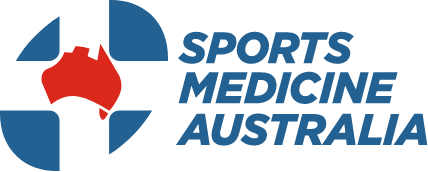Gymnastics
Fact Sheet
Introduction to gymnastics
Gymnastics is fundamental to movement and is recognised as the basis of all sport. Gymnastics prepares children in body movement, control, coordination, balance, landing and all dominant movement patterns. Children with this experience are demonstrably better at whichever sport they choose. Gymnastics leads the way in club development with its Club 10 program. This program ensures affiliated clubs meet minimum standards in safety and can be easily recognised by the Club 10 logo. The development of best practice for injury prevention and managing risks associated with gymnastics is a major part of the program.
Important information
Due to the exciting, energetic and challenging nature of gymnastics, injuries may occur, as is the case with any physical activity. Affiliated clubs and Gymnastics Victoria’s commitment to Club 10 assists in reducing the risks of injury.
- Some common injuries which may occur in gymnastics include landing and repetition injuries.
- Correct management of these injuries and returning to activity only once an injury is fully healed will help prevent re-injury.
The following information helps to highlight the common responsibilities of key personnel within gymnastic activities to minimise the risk of injury to participants.
Coach responsibilities
Legal responsibilities:
- Provide a safe environment.
- Adequately plan activities.
- Evaluate athletes for injury and incapacity.
- Provide safe and proper equipment.
- Warn gymnasts of the inherent risks of the sport.
- Closely supervise activities.
- Know first aid.
- Ensure clear, written rules for training and general conduct are followed.
- Keep adequate records.
(Extract from “Update Logbook” Coach Accreditation- Australian Sports Commission.)
Other responsibilities
- Be appropriately qualified for the gymsport and level being coached, be registered with Gymnastics Australia and keep all qualifications up-to-date.
- Annual updating is a required part of professional development.
- Complete the Managing the Risks of Coaching (MRC) compulsory online study unit. MRC focuses on safe, controlled learning environments and reducing and managing risk.
- Ensure each gymnast participates at the appropriate level for their ability, commitment and number of training hours.
- Plan lessons beginning with a warm up to ensure the gymnast’s body is ready for the class. Strength, conditioning and flexibility should be a focus to prepare for skill development. A cool down to minimise muscle tightness should end the session.
- Teach appropriate progressions for each skill and ensure that the participant has the necessary strength, conditioning and flexibility before embarking on harder skills.
- If holding a Level 2 (or above) accreditation proficiency in ‘spotting’ is required. Spotting is used to assist the gymnast as required, it is not to carry a gymnast through the skill.
Club responsibilities
When a club affiliates with Gymnastics Victoria, a number of standards must be met which help ensure a safer environment is provided for gymnasts.
- Programs are planned catering for individual needs and allow participants to progress at their own pace.
- Participants’ medical histories are kept on file and known to relevant club personnel.
- A current First-Aider is on site and accessible at all times.
- A list of local emergency contacts is available.
- Ice is readily available.
- Equipment safety checks are undertaken on a regular basis.
- Club safety rules are displayed and enforced.
- Warm-up areas are level, firm and free from obstruction.
- Matting in landing areas is non-slip, even and without gaps.
- Appropriate distance between apparatus is provided to cater for unintentional falls.
- All exposed wires and chains are covered.
- Consideration is given to ceiling height, floor surface, lighting and heating/ventilation.
Participant Responsibilities
- Be aware that many gymnastics activities may be fun but are best done with a coach in the gym and not at home. Some examples include: Somersaults, Bridging, Deep knee bend activities, Headstands.
- Be appropriately attired; this includes fitted clothing, bare feet or gym shoes. Jewellery is not to be worn in the gym.
- Dress for the conditions; be aware of the gym’s temperature and dress accordingly.
- Keep the club aware and up-to-date on current and relevant medical history.
- Take regular drink breaks to replenish the body’s fuels before, during and after training.
- Be aware of changes in the environment e.g. mats shifting, different heights of flooring around gym, wires/chains stabilising equipment and other gymnasts in the area.
Respect your coaches
- Always listen carefully and act on your coach’s instructions.
- Use equipment only when and how instructed by your coach.
In the case of an injury
- Stop immediately if you experience an injury or illness.
- Injured gymnasts should seek prompt attention from qualified first aid personnel or a sports medicine professional.
- Injuries should be fully rehabilitated through a specific and supervised program before returning to activity.
- Injured gymnasts may still be able to undertake modified training which avoids using the injured area. Maintaining contact with coaches, friends and the gymnastic environment enhances the rehabilitation process and will help gymnasts remain motivated and in good spirits.
For further information contact
Gymnastics Victoria
138 High Street Prahran VIC 3181
Phone: 03 9214 6020
Fax: 03 9214 6024
Email: [email protected]
Website: www.gymnasticsvictoria.org.au
Smartplay – Sports Medicine Australia (Victorian Branch)
Sports House, 375 Albert Road Albert Park VIC 3206
Phone: 03 9674 8777
Email: [email protected]
Website: www.smartplay.com.au
Acknowledgments
The development of this fact sheet is a partnership between Gymnastics Victoria and Smartplay.
Prepared by Gymnastics Victoria with help from Gymnastics Australia and gymnastics coaches and administrators.
Photos courtesy of Somersault Magazine, Lucy Fyfield, Sports Action Photographics and Gymnastics Victoria.
